Tuzigoot National Monument – what a treasure. Sitting on a low hilltop west of Sedona, Arizona, this cultural site is a must-visit location in a quest to understanding prehistoric life in the Grand Canyon state.
Disclosure: This post contains affiliate links. If you buy something from one of our affiliates, we receive a small commission at no extra charge to you. Thanks for helping to keep our blog up and running!
Table of Contents
What and where is Tuzigoot National Monument?
Tuzigoot National Monument is a prehistoric site featuring an ancient pueblo constructed on a hill above the Verde River. It is located near Clarkdale, Arizona, about 23 miles (37 km) southwest of Sedona.
Although there is a lot of overlap, most archaeologists acknowledge 6 major cultures who inhabited different portions of Arizona between about 450 and 1450 CE. These include the Ancestral Puebloan (Anasazi) in the northeast; Mogollon in the southeast; Trincheras in the south along what is now the border region between Mexico and the United States; Patayan in the west; Hohokam in the south-central part of the state; and the Sinagua in the north-central heart of Arizona – from what is now Flagstaff to just south Camp Verde.
Although the earliest people to arrive in Arizona left behind fluted spear points that date to 13,000 years ago, more permanent settlement in the Verde Valley happened about 1,500 years ago. These people were the Sinagua.
Some settled in massive cliff dwellings like Montezuma Castle. There were scores of smaller villages in the area, such as Palatki and Honanki. Others settled in larger pueblos – like Tuzigoot.
When the site was first excavated in the 1930s, the archeologists took a suggestion from a Tonto Apache member of the excavation crew for a name. Ben Lewis suggested Tú zighoot. It meant “crooked water.”
It was changed to Tuzigoot and pronounced TWO-zee-goot.
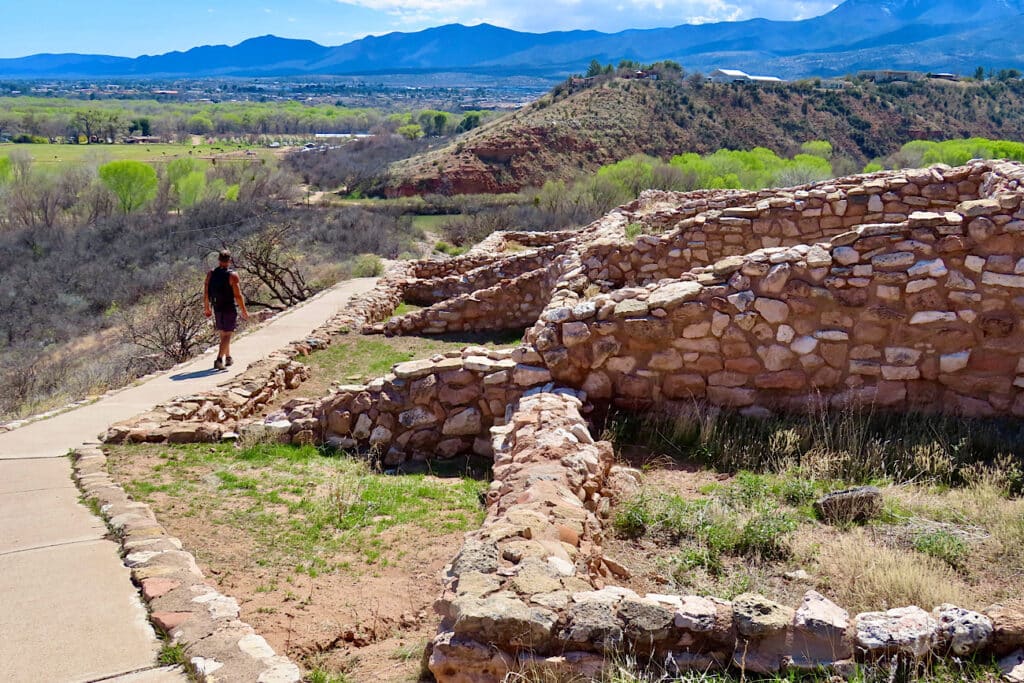
Visiting Tuzigoot National Monument
Camped in nearby Dead Horse Ranch State Park, we hopped on our bikes and took a trail leading down into Tavasci Marsh area. It takes a bit of route finding and you will need to walk bikes when you encounter signs saying walking only, but you can get right up to the monument entrance – a great option if you don’t feel like driving over from the campsite.
After parking our bikes outside the 1930s era stone building, we entered the museum and showed our park pass before diving into the displays. This museum is one of my favorites because so many of the unique artifacts unearthed during the first archaeological dig are on display. It provides a tangible picture of early life in the Verde Valley.
Plus, the building itself is a gem – styled with heavy stone walls, plaster and ceiling structure like that originally found in the Tuzigoot pueblo.
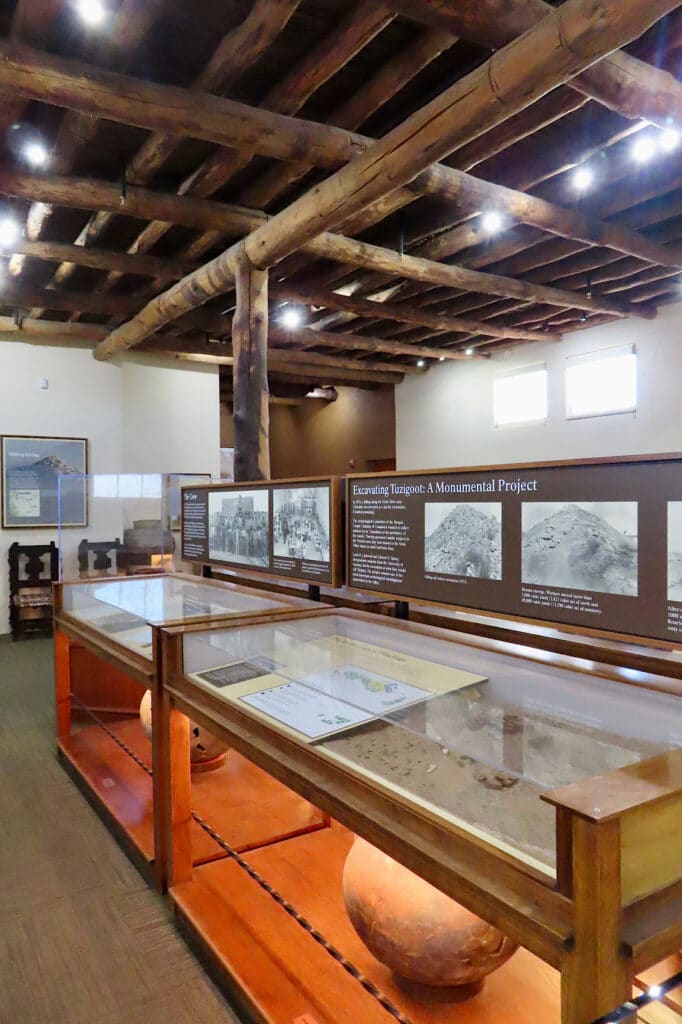
Timeline for a monument
1137-1386 Occupation of Tuzigoot by the Sinagua people
1933 Two archaeologists & 50 laborers hired to begin excavation of the site
1933-34 86 rooms & 415 burial sites excavated; 6 rooms restored; trail built
1934 Artifacts put on display in an old store in Clarkdale
1934 Grace Sparkes begins lobbying for a national monument
1935 Works Progress Administration funding to build Tuzigoot museum
1935-36 Tuzigoot visitor center & museum built (keeping the artifacts in Arizona)
1937 NPS-sponsored proposal for Tuzigoot National Monument approved
1939 President Franklin D. Roosevelt signed proclamation creating the NM
1966 Tuzigoot NM Archaeological District on National Register
2010 Tuzigoot Museum building added to National Register of Historic Places
Heading outside to view the once-thriving pueblo ruins
After getting our fill of amazing artifacts – from pots to shell beads to scraps of baskets and cotton fabric – we pulled out sunglasses and headed outside to wander the paved path through the ruins.
Over nine hundred years ago, using materials at hand, stones were laid for the first room foundation. Massive double walls, space filled with rubble, tapered as they rose. Mud mortar filled outer cracks.
Most rooms had two large juniper posts in the center. These supported the cottonwood and pine roof beams. A mat of reeds, willow branches, juniper bark, and grasses, placed on rafters, finishing the ceiling, and providing insulation. The roof was sealed with mud.
Room after room, one story was added on top of another. There were few doorways. Most rooms were entered by ladders going down through roof hatches. Almost every room at Tuzigoot had a hearth, indicating a living not a storage space. Rooms for trade and politics and other cultural activities surrounded an open plaza used for daily and ceremonial activities.
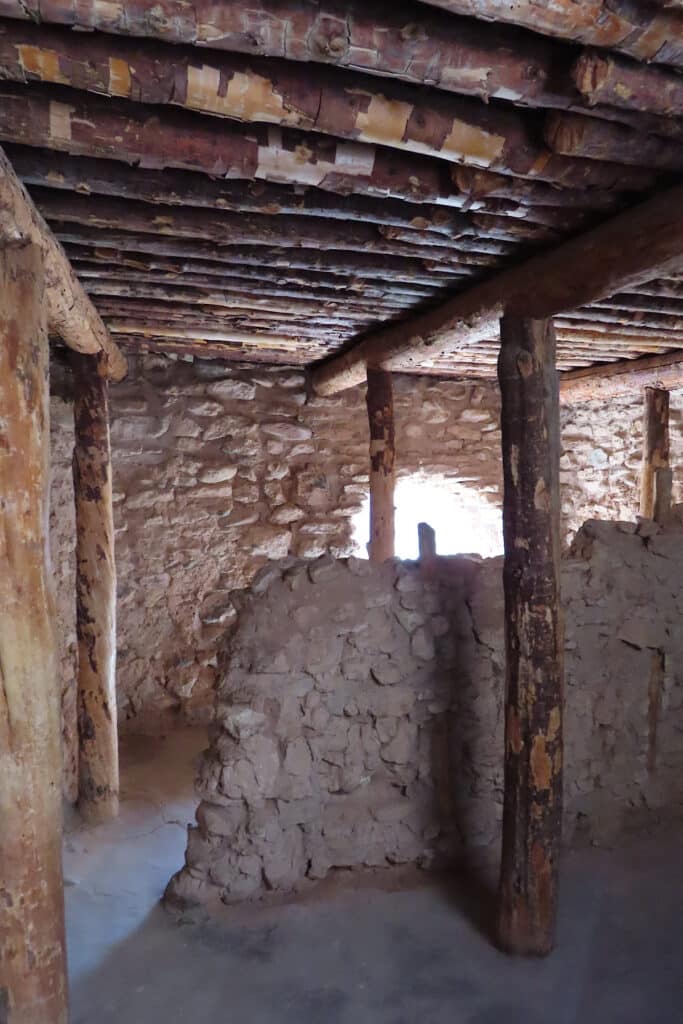
Over several centuries Tuzigoot grew into a 110-room pueblo. In the 1930s, archaeologists Caywood and Spicer believed the population of Tuzigoot to be around 450 people at its peak. Today’s estimate – with better understanding of how spaces were used – is closer to 225.
Wandering the reconstructed rooms, we imagine them filled with people making pottery, weaving cotton, climbing ladders, building new rooms, knapping points, grinding corn, cooking meals, performing ceremonies, giving birth, and burying their dead.
Tuzigoot was a hive of activity for hundreds of years… and then it was silent.
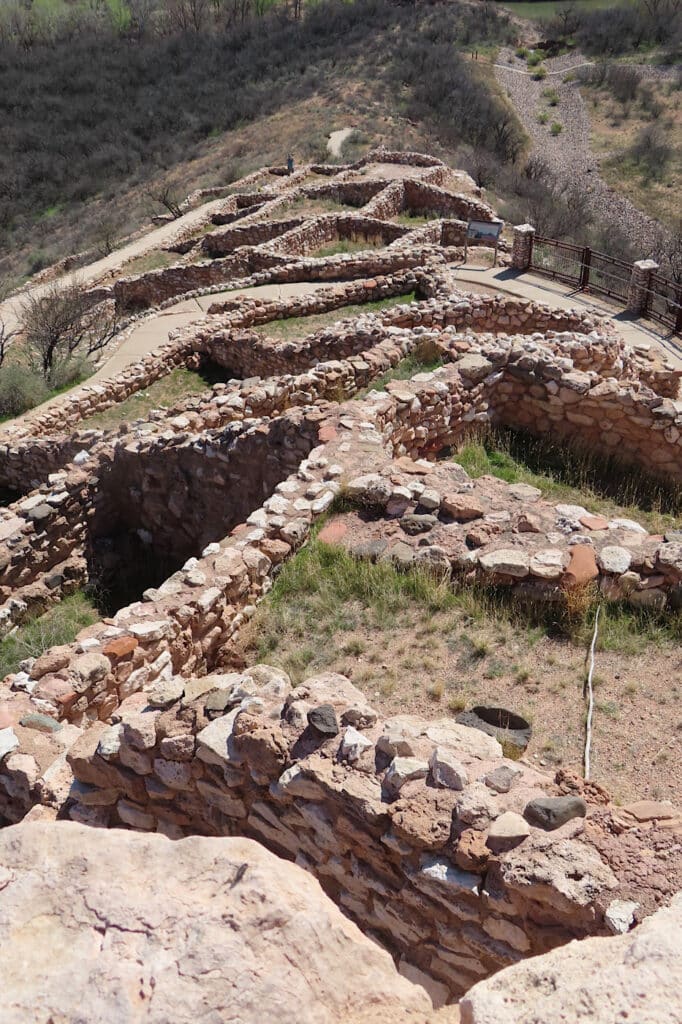
What happened to the Sinagua?
After several hundred years of living in the Verde Valley, people began migrating to new places. According to the Hopi, this area was never a permanent home. It was a stopping point on a migration journey.
While no one knows for sure, there are theories it could have been changing climate, food shortages, and/or increased tensions between groups that signaled the time to continue the migration. Many moved northeast to Chavez Pass and Homol’ovi, as well as villages at the Hopi Mesas.
Nearly 200 years after their departure, when the first Europeans arrived, they found the valley populated by Yavapai people living in scattered ranchertas, clusters of dwellings that were less permanent than pueblos. Tuzigoot was a pile of silent stones.
Most people travelling in the American Southwest have heard of the Ancestral Puebloan (Anasazi) culture and are familiar with the more recent Hopi pueblos. The Sinagua culture is a bridge in between these two that is worth learning more about.
I hope you join us on this and other active travel journeys seeking the past!
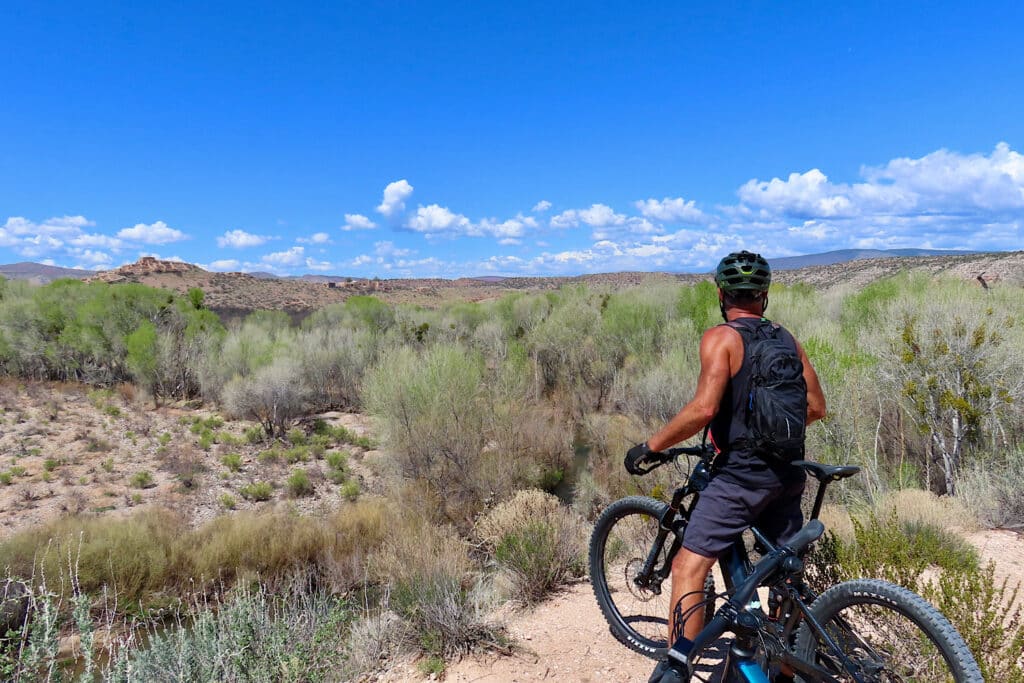
If exploring cultural sites and prehistoric ruins is right up your alley, take a trip east of Phoenix to the historic city of Globe and the Besh-Ba-Gowah Museum & Archaeological Park!
When You Go
The monument is located at 25 Tuzigoot Road, Clarkdale – about 52 miles (84 km) south of Flagstaff and 90 miles (145 km) north of Phoenix, Arizona.
Tuzigoot National Monument is open daily from 8 am – 4:45 pm (except for Thanksgiving, Christmas and New Year’s Day).
Leashed dogs are welcome on the trails at Tuzigoot National Monument (but not inside the museum).
Find more information online on the NPS website.

Plan your adventures with our 2026 RV Trip Planner available in our Etsy Printables Shop!
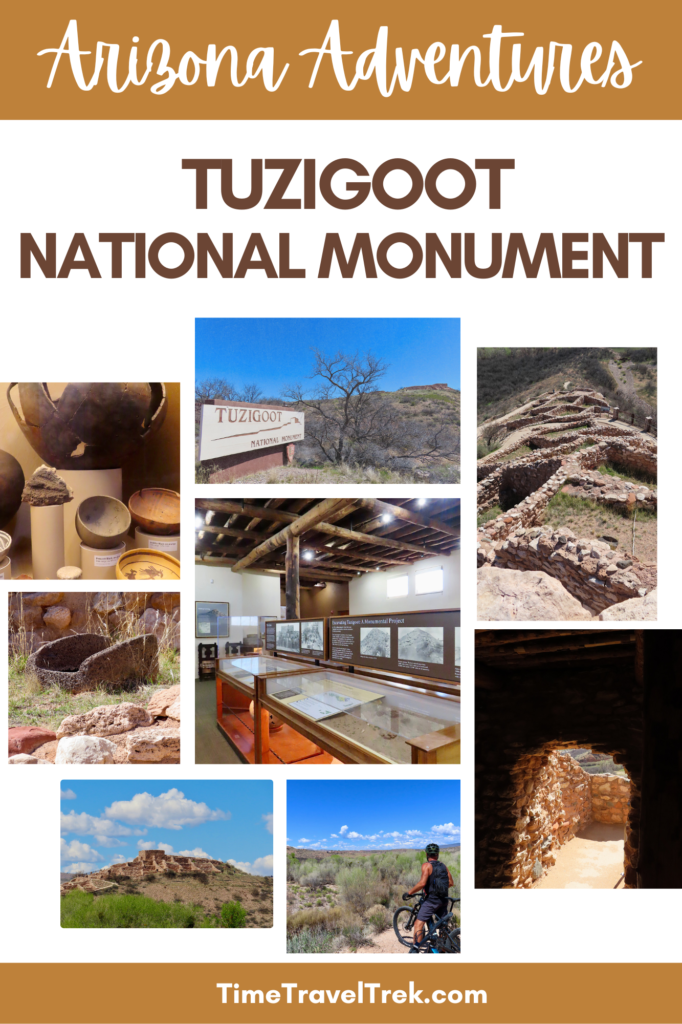
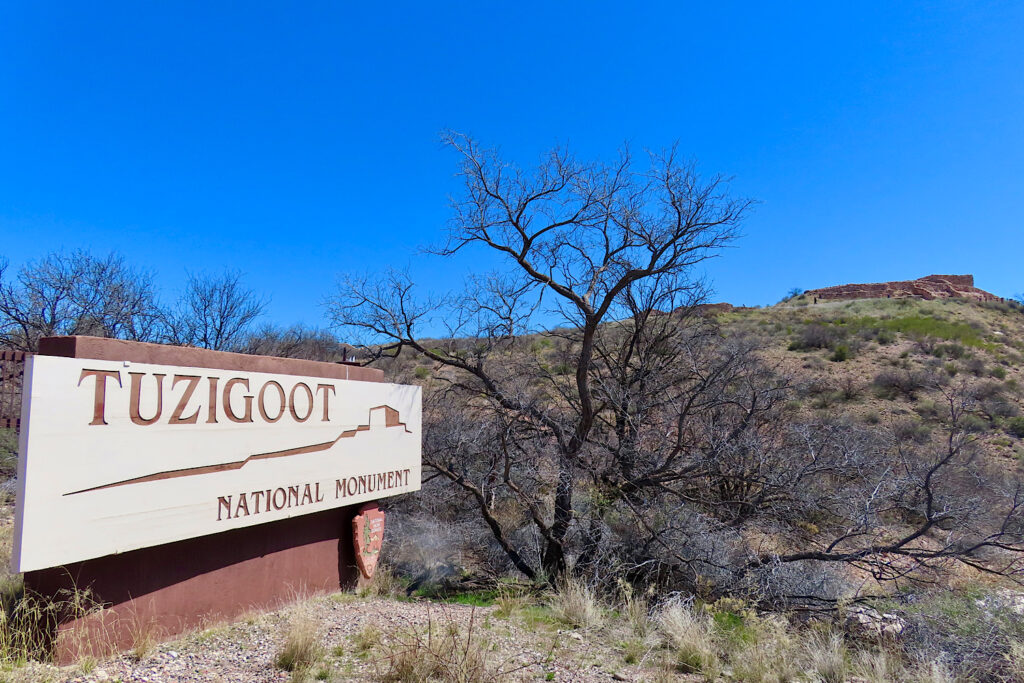
Leave a Reply